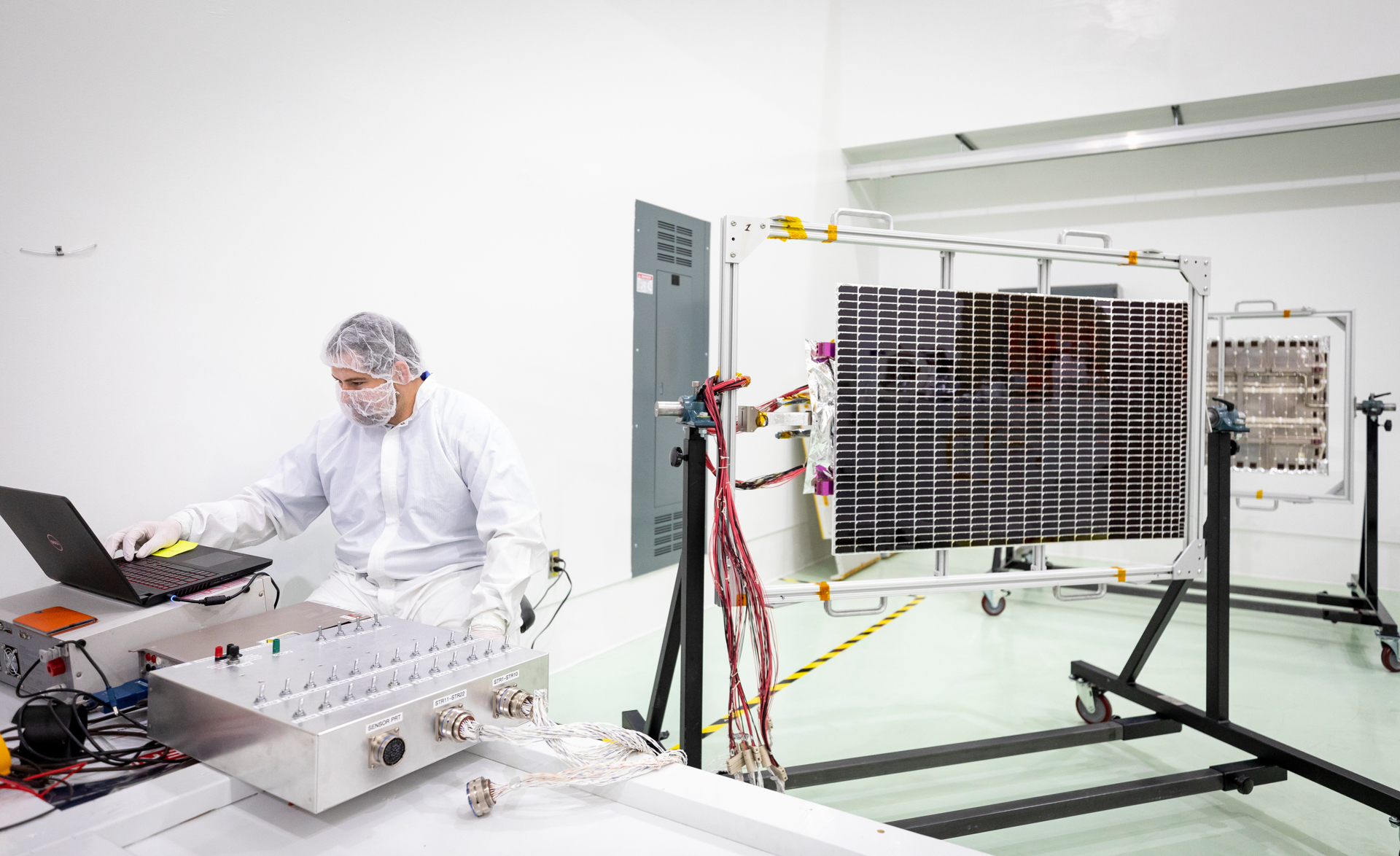Solar Power: Parker Solar Probe Tests Its Arrays
Posted on 2018-05-07 12:03:00NASA’s Parker Solar Probe gets its power from the Sun, so the solar arrays that collect energy from our star need to be in perfect working order. This month, members of the mission team tested the arrays at Astrotech Space Operations in Titusville, Florida, to ensure the system performs as designed and provides power to the spacecraft during its historic mission to the Sun.
Parker Solar Probe is powered by two solar arrays, totaling just under 17 square feet (1.55 square meters) in area. They are mounted to motorized arms that will retract almost all of their surface behind the Thermal Protection System – the heat shield – when the spacecraft is close to the Sun.

ArrayTestingASOMay
Credit: NASA/Johns Hopkins APL/Ed Whitman
High-Res Image
ArrayTestingASOMay
Credit: NASA/Johns Hopkins APL/Ed Whitman
High-Res Image
ArrayTestingASOMay
Credit: NASA/Johns Hopkins APL/Ed Whitman
High-Res Image
ArrayTestingASOMay
Credit: NASA/Johns Hopkins APL/Ed Whitman
High-Res Image